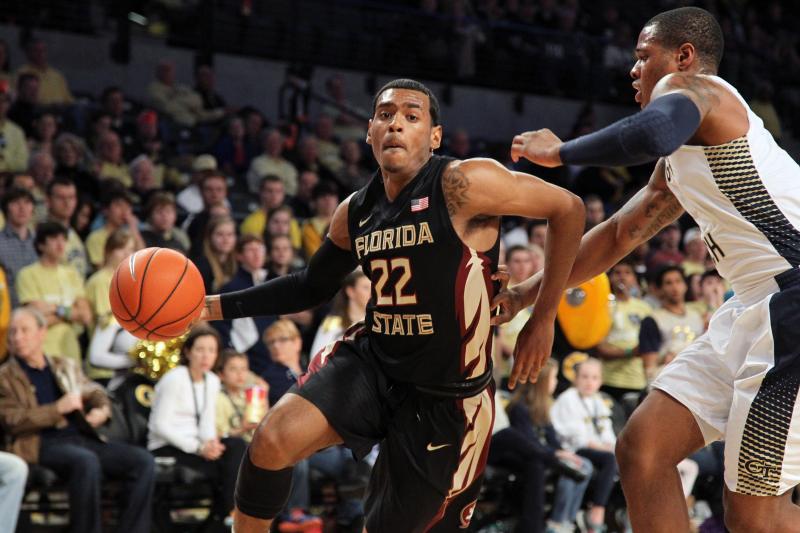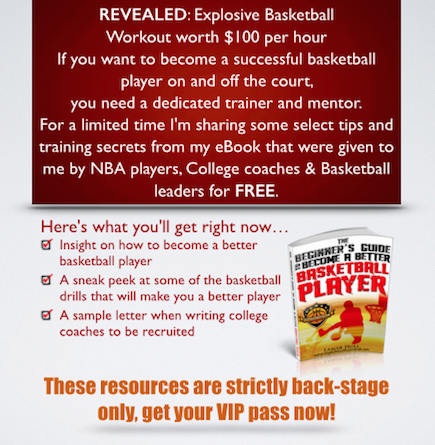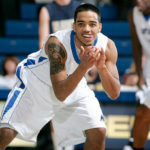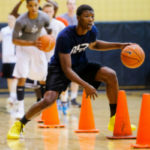
- 0
- 13.7K
- 0 likes
8 Ways to Reduce Turnovers in Basketball

If you follow basketball, you’ve probably noticed on ESPN, other sports shows, or your local newspaper, how turnovers can cost a team the game. When a sports Analyst discusses the stats that causes a team to lose, they often bring up turnovers and their assist to turnover ratio.
In short, turnovers are bad and can cause your team to lose if you have too many of them. I’m focusing on turnovers for this week’s article because I currently coach a 9th grade AAU team and we average 20+ turnovers a game! Yea, I know, that’s a lot!
While turnovers are a common problem for many players and teams, they can be thought of as simple mistakes. Here are 8 ways to help reduce turnovers in basketball.
#1 Ball-Handling Turnovers
As a fundamental skill, your players have to be able to handle the basketball, especially under pressure. If not, go back to the fundamentals and have your players work on their ball-handling and dribbling skills on a daily basis or even at practice.
You definitely need a few guards that can handle the basketball. If the point guard is having problems with a quick defender, instruct the player to quickly pass to the off-guard and then get the pass back to set up the offense.
Another option is to screen for the point guard or ball-handler to relieve the pressure. Another way to reduce turnovers is by not dribbling as much and making smart, quick and accurate passes, which is a great transition to my next point.
#2 Passing Turnovers
A lot of turnovers occur as a result of poor passing. If you are a coach, spend a lot of time with your players in this area. You may have to go back to the basics, and encourage your players to avoid being flashy or trying to make complicated passes.
Another way to avoid passing turnovers is by making crisp passes and using fakes before making your pass. A fake will keep the defense honest and not give them the opportunity to read the direction of your pass for a deflection or steal.
In AAU, a lot of teams play some type of zone defense. You wouldn’t believe how many turnovers that my team commits against a zone defense. Before every game and practice I make the players stand in a circle, I will then put one player in the middle. He has to pass the basketball to each player with a variation of passes, such as; bounce pass, over the head pass, chest pass, etc.
I instruct the player in the middle to fake pass before passing and making hard and crisp passes. This basic drill has helped them reduce turnovers in the game. One cardinal rule is to never jump while making a pass.
Also, what good is a stylish pass if it doesn’t get the job done?
Players have to develop their vision on the basketball court and see the defense. To improve in this area, teach players on the perimeter to get in a triple-threat position. Here is an important point, players should keep their passes simple.
Usually, these passes are two-handed, chest passes. Too many times I see players throwing one-handed passes and that pass resulting in a turnover. While a one-handed pass can sometimes be useful, such as a baseball pass, but I will put my money on a hard chest pass any day!
#3 Catching-Receiving Turnovers
This is a turnover that drives me crazy as a coach!
If you don’t catch the pass, then it’s going to be a turnover, right?
Of course it is!
To improve the chances of catching, players should get into the habit of catching the ball and then getting right into triple-threat position instead of immediately starting to dribble or catch the pass first before you start making your move.
I have seen a lot of players not see the basketball through and catch it with two hands. The player is typically thinking about his next move before he or she catches the pass.
As a coach, this is super important to build into your practice time. There are tons of passing drills to help reign in players that tend to rush. A lot of the time players have to be tough with the basketball. They have to attack the pass with two hands.
#4 Overload Basketball Drill
This basketball drill helps build both strength and speed of the pass. Put one player at the elbow and put another player facing player 1 at the other elbow. Put a defender in the middle of those two players.
The defender starts guarding player 1 (full pressure). Player 1 has to get in triple-threat and protect the basketball. The coach should count to 5! Once the offensive player protects the basketball for 5 seconds he or she is allowed to make a hard pass to player 2.
Make sure player 1 is working on his fakes, chest pass, bounce pass, and etc. Have the defender work on his or her defense as well. This happens back and forth until the defender gets a turnover or deflection. There is no dribbling!
This type of drill will help players build their strength and confidence with a little bit of pressure. If the defense doesn’t get a steal, this is great for the offensive players. After 5 passes, have the players rotate. For every turnover, that specific player has to do 5 push-ups. Too many turnovers will add up and result in a lot of push-ups.
#5 Spacing & Angles
In my opinion, this is probably the most important part of any offensive set that’s sometimes overlooked. Coaches should put in an offense that forces players to space out so that they are not bunched in a corner against a tough defense. You are asking for a turnover without spacing.
With the right spacing, cutting, and movement, you will be able to teach players how to shorten their passes and reduce turnovers. Shorter passes will be less vulnerable to a turnover.
As an aspect of spacing; dribbling with a purpose, attacking, or probing in some cases will improve spacing. Angles are super important when it comes to reducing turnovers. If players have bad angles when making a pass, you are most likely to see the basketball bounce off of their teammates leg or out of their hands.
A coaching point for angles is to square your shoulders on every pass, have balance and be under control. This will help with completing a pass with the right angle no matter what pass you throw, whether a bounce pass, chest pass, etc.
#6 No Dribbling
One of the most practical ways to teach players about effective passing, angles, getting open, spacing, is by spending some time in practice not letting them dribble. Also, you can make this aspect of practice super tough by playing 5-on-5 in the half court with no dribbles. Then you could add one dribble the next week, two dribbles the next week and so on.
This will teach players to use their dribbles wisely. You should expect to see players have some initial frustration, especially the ones who are not super tough. However, when you incorporate this into practice, their skills will improve exponentially.
You will start to see some of your players getting tougher as they will get tired of turning over the ball and doing push-ups. Lastly, try and work in a scrimmage without dribbles to build skills and reduce turnovers.
#7 Signaling & Communication
Another aspect of turnovers that is often overlooked is a lack of communication.
If you’re going to pass the ball to another player, how do you know that they’re actually ready to catch it?
To work on this area, players need to be on the same page. To fix this problem, establish team rules to drill these two basic concepts. First, players who want the ball need to have their hand out as a target.
If they’re going to change direction, they should drop the hand target and give a new one once they get open. Second, no hand target, no pass. It’s really as simple as that. These non-verbal cues improve communication between teammates and create more accurate passes to help reduce turnovers.
#8 Learn From Mistakes
Discuss what can be learned from every turnover that’s made in a game. The best way to do this is by watching film. I watched film with my 9th grade team the other day and they were able to see the silly turnovers that they made.
While it may not be beneficial to have players watch an entire game film, making note of the turnovers and teaching them how to avoid them will build their skills and help them to reduce them in the future.
Have your players talk about their turnovers and how they can individually help reduce the overall turnover total. Another way to help your team reduce turnovers is by watching turnovers made by collegiate and professional players. You can certainly learn from every level. Having the team critically think through these areas will create improvements over time.
Conclusion
Finally, make sure to give it time. None of your players are going to eliminate turnovers immediately. However, if you and your team use these drills and tips, you’ll notice a significant improvement in your turnover stats. I know I have!
In addition, play a lot of games and practice on reducing turnovers. That’s how you get better at anything…practice! Lastly, use this advice and then develop a plan of action and keep your team in the loop so that they understand what they are working towards. You’ll be surprised at what your players and team will accomplish.








LEAVE A COMMENT